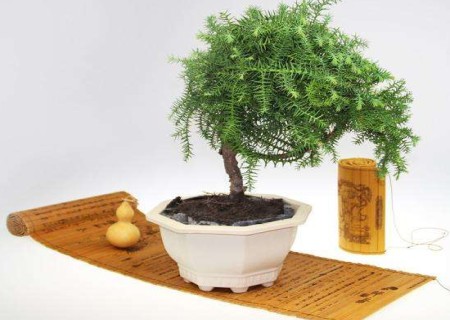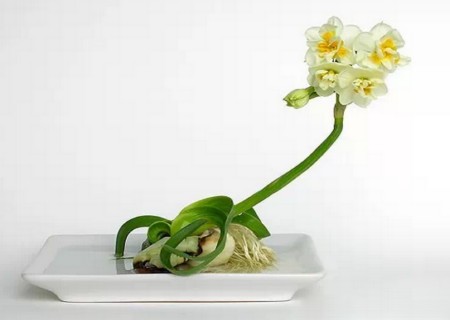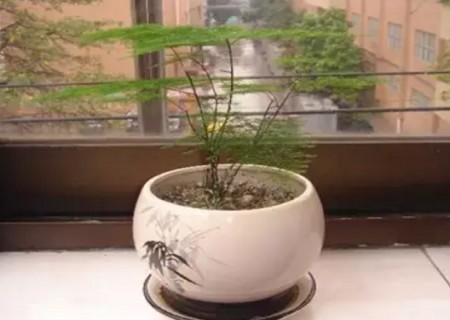Methods and points for attention of bonsai culture of Australian fir
Crown steeple-shaped, dark green, crown epidermis often split or strip-like shedding; the new epidermis has bronzed luster. Stem erect, lateral branches whorled, horizontally extended. Branchlets distichous alternate, extending horizontally or slightly pendulous.
Australian fir is a very ornamental tree species, which has been rated as one of the three largest ornamental trees in the world. Its vitality is extremely strong, and evergreen all the year round, is an expert in air purification, suitable for indoor maintenance in the lack of light. Do you know anything about Australian fir? Do you know the culture method of Australian fir? What do you need to pay attention to in Australian fir culture? Next, let's learn about it together.

Conservation methods of Australian fir bonsai:
1. Soil: Australian fir is suitable for slightly acidic sandy loam with good drainage and rich humus. When potted, it is better to use the mixture of garden soil, rotten leaf soil and peat moss.
2. Lighting: Australian fir likes diffuse light and should be placed in a bright place in the shed. If it is kept in the dark for a long time, it should be moved to the sun every few weeks to make the thick green leaves maintain a beautiful color.
3. Temperature: it can grow all year round except when the summer temperature exceeds 32 ℃. But the suitable temperature for growth is 10-25 ℃, and the overwintering temperature is above 5 ℃.
3, watering: Australian fir in spring to autumn, should be more watering, but avoid stagnant water in the basin. When drying at high temperature, spray water on the basin plant and the ground near it to cool and humidify. Water it in time. Don't wait until the soil is dry before watering. Since the end of autumn, watering is gradually reduced to enhance its cold resistance.
4. Fertilization: fertilizer should be applied every 2 weeks in the growing season, and the compound fertilizer containing nitrogen and potassium is suitable. If the supply of fertilizer is insufficient, the branches and leaves are easy to turn yellow.
6. Change the basin: the trunk of young trees is fragile and easy to bend and deform, so it is appropriate to fix the trunk by props from the time of young trees. In order to prevent the plant from growing too tall, the pot should be changed every 2-3 years after the spring is warm. At ordinary times, we should pay attention to protect the lateral branches so as not to be damaged and affect the plant shape.
7, insect diseases: Australian fir diseases and insect pests are very few, in indoor maintenance, most of the shell insect harm, can be sprayed with methophos, chlorpyrifos machine EC, Guoguang scale must die and other control, the effect is good.
Maintenance precautions:
Australian fir culture methods like warm, humid environment, grow well in sunny places, have a certain degree of shade tolerance, but to avoid strong light exposure in summer. It is not resistant to cold and drought and is suitable for slightly acidic sandy loam with good drainage and rich humus.
1. Summer and autumn are the growing periods.
Potted plants can be placed not only in the vulva, but also in the ventilated place with light in the window, avoid hot sun exposure above 35 ℃ Celsius, and should not be put in shady places without light for a long time. In this way, the branches and leaves will be withered and yellow or grow too long, affecting the ornamental value.
2. In the process of growth
In order to avoid tilting the trunk to one side, it is appropriate to turn the pot once a half month to let the plant receive light evenly. In addition, the trunk of young trees is fragile and easy to bend, so it is appropriate to set up pillars to fix the trunk from the time of young trees. In order to prevent the plant from growing too tall, the pot should be changed every 2-3 years after the spring is warm. At ordinary times, we should pay attention to protect the lateral branches so as not to be damaged and affect the plant shape.
3. In general, it is not necessary to prune the branches
Let it grow naturally, the suitable temperature for growth is 10-25 ℃, and the overwintering temperature is above 5 ℃. Overwintering season, can give a certain amount of light, basin soil can not be too dry, sunny weather should also spray water to increase humidity.
The above are breeding nursing methods and matters needing attention, hoping to bring help to friends. As long as we take good care of it, we will certainly be able to produce a thousand beautiful flowers.
Time: 2019-05-31 Click:
- Prev

How to deal with potted daffodils after blooming? How do you raise it?
Daffodils in the living room can make people feel quiet and warm. The living room is a place for family reunion and reception, suitable for choosing gorgeous flower arrangement and noble and generous daffodils. Daffodils at home can absorb the noise emitted by the home, absorb the exhaust gas from the home, and release fresh air.
- Next

What about rotten roots of asparagus?-pruning of asparagus promotes root germination
Asparagus is light, green, soft leaves, bamboo-like branches, elegant and unrestrained posture, tenacious vitality, is one of the family flower potted plants loved by many owners. Asparagus is a kind of green potted plant that looks elegant and chic, and it has a good effect on air purification. It looks interesting with some simple flowerpots.
Related
- Fuxing push coffee new agricultural production and marketing class: lack of small-scale processing plants
- Jujube rice field leisure farm deep ploughing Yilan for five years to create a space for organic food and play
- Nongyu Farm-A trial of organic papaya for brave women with advanced technology
- Four points for attention in the prevention and control of diseases and insect pests of edible fungi
- How to add nutrient solution to Edible Fungi
- Is there any good way to control edible fungus mites?
- Open Inoculation Technology of Edible Fungi
- Is there any clever way to use fertilizer for edible fungus in winter?
- What agents are used to kill the pathogens of edible fungi in the mushroom shed?
- Rapid drying of Edible Fungi

